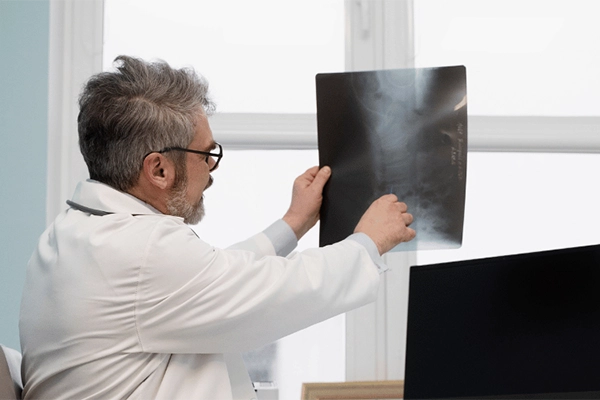Topics
What is blood pressure?
You have probably heard the term blood pressure before. Blood pressure refers to the force exerted by blood against the walls of your arteries. Arteries carry blood from the heart to other parts of the body.
What do the numbers mean on a blood pressure reading?
Blood pressure is measured using two readings: systolic, which reflects artery pressure when the heart contracts, and diastolic, indicating pressure when the heart refills with blood between heartbeats.
Systolic and diastolic blood pressures are measured using millimetres of mercury (mmHg) as the unit of measurement.
For example, if your systolic pressure is 120 mmHg and your diastolic pressure is 80 mmHg, they will inform you that your blood pressure is 120 over 80, commonly written as 120/80 mmHg.
How is blood pressure measured?
Your doctor or nurse will use a sphygmomanometer to measure your blood pressure. The sphygmomanometer comes with an inflatable cuff and a mercury scale. They will place the cuff around your upper arm, inflate it to temporarily restrict blood flow, and slowly release the air.
By observing the mercury gauge and listening to your arm’s main artery with a stethoscope, they will record your systolic pressure upon hearing your heartbeat and your diastolic pressure when the sound disappears.
After taking your blood pressure, they will provide your systolic reading, followed by your diastolic reading.
Alternatively, they may use a digital sphygmomanometer, which automatically measures your pulse and blood pressure using electrical sensors. Blood pressure testing kits are also available for personal use.
The ideal blood pressure is 120/80 mm Hg.
What blood pressure is too low?
Low blood pressure, medically referred to as hypotension, happens when blood flows through your blood vessels at pressures lower than normal. Low blood pressure is a reading of less than 90/60mmHg.
What blood pressure is too high?
High blood pressure, also known as hypertension, is a condition that occurs when the force exerted by the blood against the artery walls is consistently too high, requiring the heart to work harder to pump blood to other parts of the body.
| Elevated blood pressure |
|
| Stage I hypertension |
|
| Stage II hypertension |
|
A blood pressure reading exceeding 180/120 mm Hg is considered a hypertensive crisis and requires immediate medical attention.
When should you check your blood pressure?
You should check your blood pressure regularly if you have hypertension, as advised by your doctor. Additionally, it is recommended to monitor your blood pressure if you have certain risk factors for hypertension or cardiovascular disease, such as obesity, diabetes, or a family history of high blood pressure.
You should check your blood pressure at the same time daily, such as in the morning and the evening. It is best to take the readings every day, starting two weeks after a change in treatment and throughout the week leading up to your next appointment.
How to check blood pressure at home?
To ensure accurate results when using your home blood pressure monitor, it is important to follow these steps:
- Before measuring your blood pressure, avoid smoking, consuming caffeinated beverages, or exercising for at least 30 minutes. Empty your bladder and rest quietly for at least five minutes.
- Sit with your back straight and supported on a firm chair, with your feet flat on the floor and legs uncrossed. Position your arm on a flat surface, such as a table, so the cuff is at heart level. Ensure the bottom of the cuff aligns with the bend of your elbow.
- Refer to the instructions provided with your blood pressure monitor for guidance on proper placement and use. Ask your doctor to demonstrate how to use the monitor correctly if needed.
- To ensure accuracy, take two readings one minute apart and record the results.
- For accurate results, always place the cuff directly on your bare skin rather than over clothing.
Make an appointment at Pantai Hospitals
Take control of your blood pressure today. Monitor regularly, follow a healthy lifestyle, and work closely with your doctor to manage hypertension effectively. Your proactive efforts can improve health and reduce the risk of complications.
Get in touch with us to book an appointment today if you have concerns or questions regarding blood pressure. A dedicated team of expert cardiologists at Pantai Hospitals is available for consultation to provide the best care and assistance. We assure you the best possible care tailored to your specific needs.
Pantai Hospital has been accredited by the Malaysian Society for Quality in Health (MSQH) for its commitment to patient safety and service quality.












